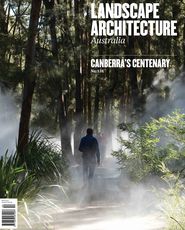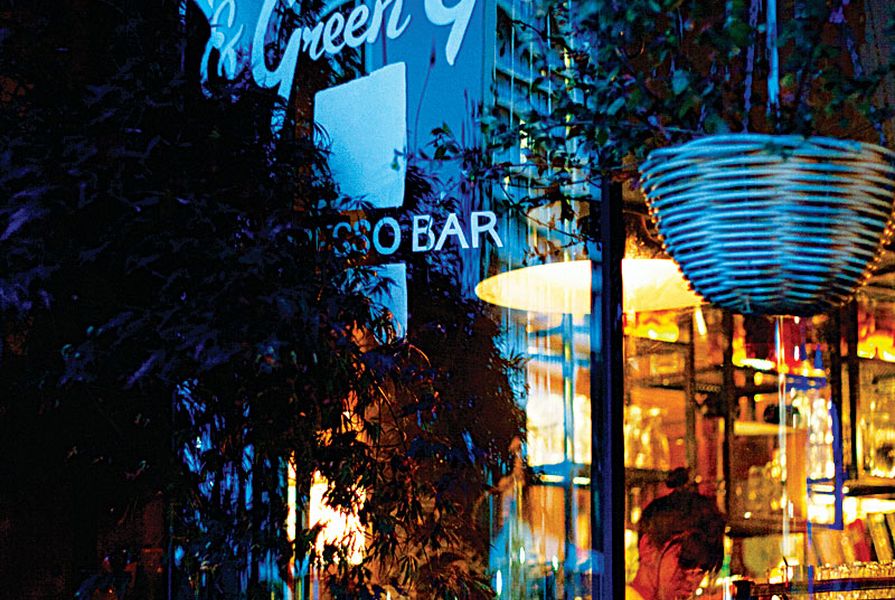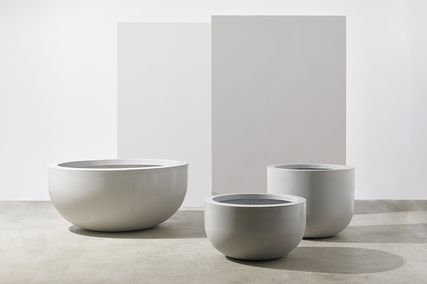To the uninitiated, Canberra can appear a pale imitation of the country’s larger, older cities. The surface is one of a toy town, a textbook diagram, a town planner’s plaything. Everything seems in its place – neat, clean, sealed, sensible; concrete huddle and manicured lawns beside a man-made lake; sexless, earnest and impenetrable.
This impression, often the first for travellers streaming up Northbourne Avenue or bussing around Parliamentary Triangle, is hard to sidestep. Even the CBD is dominated by homogeny, in the creeping clutch of a mall, turning its back on the arcades and shopping strips of “old” Canberra, and directing and losing pedestrians within its cavernous comfort. The outsider or weekend visitor is hard-pressed to reconcile the city’s outward appearance with its reputation as an arts capital – a supposed seething mess of artistic activity, from tertiary study in art and design through to monolithic arts institutions, from the outpourings of misspent youth to the yields of professional careers.
To experience this Canberra, to understand why people would choose to live here rather than in another city, to base their creative practice here, is to look at the spaces around the facade – between the bars, restaurants, shops and galleries, apartment blocks and office space, away from the brightest and the biggest. Only then do you begin to see that as with anywhere, this city is populated with the perceptions and projections of its inhabitants. The gaps become opportunities, invitations; spaces where real life, creative life, begins.
Each year we watch our talented graduates migrate to the bright lights of the big city the day they have a degree in hand, racing one another up or down the Hume Highway to the promised lands of Sydney and Melbourne, or further still. Yet those individuals who remain in Canberra upon finishing tertiary study find themselves extremely well-placed in a city that is bursting, oozing, tripping over itself with a completely unordinary scale of opportunity, though it may not be in the expected sense.
It’s no secret that a design education ultimately emerges as being less about practical skill and more about problem solving with innovation and creativity. The latter makes valuable contributions to any industry, creative or otherwise. More important than design as a vocation is design as a way of seeing and reading the environment, to identify what is lacking, and to address it. It is the designer as dreamer, designer as cultural interpreter, designer as change agent. For these individuals Canberra is wide open.
Everybody has ideas, schemes, grand plans, and in a town like this, they can probably pull them off. In a town like this, you have no excuse not to. The like-minded find one another, and in Canberra’s time and space, freed from the creative crush of our larger near neighbours, ideas spread, at first creeping into public consciousness, then fast and boundless.
Two years ago a paste-up began to be seen around Canberra in a distinct style that set it apart from the clustered imagery found across the city. It was the effigy of Walter Burley Griffin, tucked around corners, down alleyways, standing dapper with one hand in pocket and the other clutching a letter to his beloved Marion. As the artwork proliferated, the Dear Marion project became loved and recognized, more well-known than the group that had spawned it. Going by the name of Canberra Lab, the collective of young designers and architects had come together to foster discussion and critique in the industry. The paste-up in Walt’s honour was but one way to do so.
The cafe Mocan and Green Grout, New Acton Precinct.
Image: Lee Grant
While the majority of Canberra Lab members are architecture graduates of the University of Canberra, these multi-tasking individuals are eager to encourage dialogue between design disciplines and the wider art community. The group’s mainstay is its online zine, but the public success of Dear Marion led to Canberra Lab increasing its involvement in arts festivals and collaborations with local galleries and other artists. In mid 2012 they joined with artist and designer George Rose (a graphic design graduate of the University of Canberra) to mount an interactive exhibition at Canberra Museum and Gallery entitled Circumcised @ 617.
The collective took to the gallery to imagine a Canberra that wasn’t subject to height restrictions, such as 617 metres above sea level. Members of the public were asked to suggest a better, taller Canberra, their visions realized by Rose’s hand in a dreamed cityscape on the gallery wall. As a collaboration, the project went a long way to engaging the residents of the city while satisfying the group’s central mission. In their own words, “Canberra Lab is about understanding Canberra … investigating what it is that works for Canberra, why is the city the way it is, what works, what doesn’t and exploring the potential of the city.”
One of the best recent examples of what does work in Canberra can in fact be found in the hospitality sector. Tucked at the end of Marcus Clarke Street, away from the relative action of the city, the cafe Mocan and Green Grout is the jewel of Molonglo Group’s New Acton Precinct. For Myles Chandler and David Alcorn, a close partnership with Molonglo Group has seen them able to realize the classic dream of running one’s own establishment as two of Mocan’s operators.
Chandler and Alcorn came to the cafe game with no significant hospitality experience, as University of Canberra graduates in industrial design and graphic design respectively, yet their backgrounds sit well within Molonglo Group’s particularly exacting and wholly integrated vision. The team has carefully orchestrated every detail, from hardware to crockery to fixtures and furniture, commissioning local artisans, closely overseeing fabrication and even building with their own hands when need dictated. From the consumables to philosophy, styling and service, Mocan addresses a hole in Canberra’s coffee landscape for an alternative to the cookie-cutter cafe. The cafe exudes honesty and authenticity, and has been built with passion and expert skill at every turn, yet no aspect is accidental in this collaboration. Canberrans signal their approval with fever-like patronage, on weekends covering the street furniture like contented pigeons, relaxed enough to stay all day and making the precinct their own.
“Capsule stores” on Lonsdale Street dedicated to vintage clothing, homewares and locally designed fashion.
Image: Amanda Thorson
Chandler and Alcorn, avid cyclists, have come full circle to return to their design roots, last year beginning production on Mocan-brand road bikes and cycle wear for distribution through the cafe frontage. The Good Speed fixed-gear bicycle, wholly Canberra-made, is currently being manufactured to order, and cafe patrons can peruse the options while waiting for their drinks. Coffee and cycling have long gone hand-in-hand, and in continuing the tradition the cafe becomes a comprehensive hub for the promotion of a lifestyle informed by culture and the admiration of fine craftsmanship.
As I write this, on a sweltering November afternoon, another major player is preparing to be officially launched. Lonsdale Street Traders is the community-centred trade-off for an otherwise potentially clinical transformation of Braddon, which for a time looked to push out independent business in favour of boutique apartments and high-shine retail frontage in the former industrial zone’s inevitable gentrification. Nick Bulum, a director at B & T Construction, has reworked a former tyre store (a fitting nod to the street’s longstanding reputation as a greaser’s haunt) into a sort of mini-mall for independent boutiques and businesses.
The greater warehouse of the original building has been sectioned into small spaces – capsule stores – tenanted on short-term leases by a diverse array of creative Canberran entrepreneurs. Among the selection is vintage clothing, a vegan bakery cafe, gift and homewares stores, a florist, a hairdresser, exhibition space, locally designed fashion, and a showcase gallery associated with Craft ACT: Craft and Design Centre. For many traders, this marks their first venture with retail space, having previously operated from home or markets stalls. Many are formalizing collaborative relationships that have grown out of their involvement in the arts community and which continue to evolve. Many are graduates from Canberra institutions, taking advantage of this shift in the landscape. As an initiative enabling early-career creatives to get a foothold in the market, Lonsdale Street Traders encapsulates the inherent opportunity of this city.
That’s not to say setting forth on the path of a professional arts practice is easy in Canberra. It will be a struggle, of course, but here it can feel more like one that will give back what you put into it. Here we often have comrades and collaborators instead of competitors, because there are enough of those elsewhere.
Despite the construct, the carefully considered veneer, Canberra is no place for posers. Here it is not enough to simply look like an artist, a creative or a culture consumer draped over cafe seating. Here, you have to walk the walk, because the city is too small for anonymity and too generous with possibility, with reward to be gained all round.
Source

Discussion
Published online: 28 Nov 2013
Words:
Yolande Norris
Images:
Amanda Thorson,
Lee Grant
Issue
Landscape Architecture Australia, May 2013




















